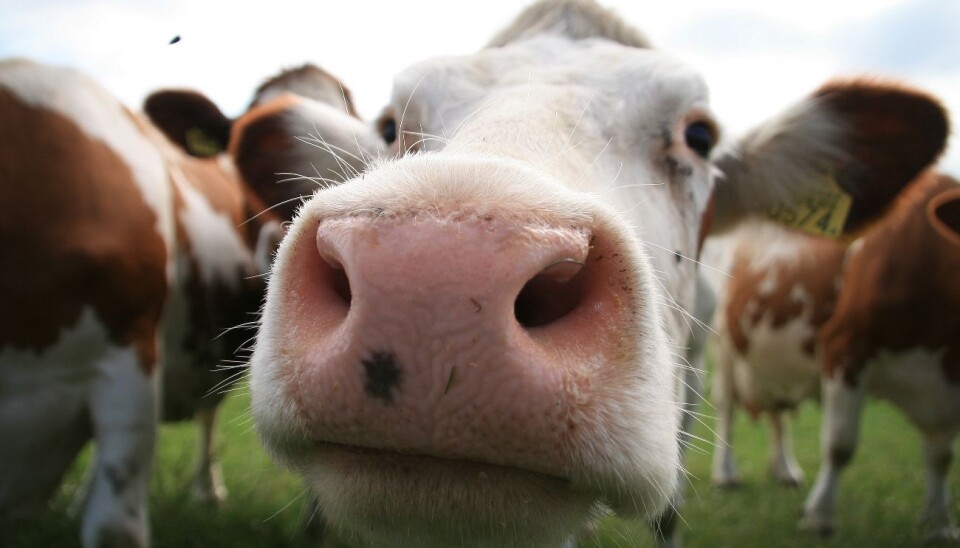
Rounding up a cattle virus in human noses
Watch where you sneeze! Humans can make cows sick by transmitting a virus from barn to barn – sometimes in their noses.
Denne artikkelen er over ti år gammel og kan inneholde utdatert informasjon.
Diarrhoea ravishes Norwegian barns every winter. Cows cough, get fevers and lose appetite, suffer stomach disorders and their general health depreciates.
They have been struck with the highly contagious bovine coronavirus (BCV), or cow diarrhoea virus, as veterinarian Veslemøy Sunniva Oma calls it.
“The disease can be serious for cows, especially calves. Nevertheless, there’s been little focus on how we can avoid infection,” says Oma.
The PhD student at the Norwegian University of Life Sciences (NMBU) researches the way cow diarrhoea virus can be spread by humans.
Serious disease
The virus also impacts farmers because the economic consequences can be sizeable. Stricken cows produce less milk and calves grow more slowly or need more feed to mature.
Many have suspected that the dairy farmers themselves, or veterinarians, are transferring the disease from one farm to the next.
Little has been done to research how this works or how long humans are potentially contagious.
Oma has put her nose to the grindstone. Or more aptly, she has investigated the noses of her test subjects.
She found that the virus can stay active in our nasal passages for as long as six hours.
“A half hour after having contact with a sick cow you can have plenty of the viruses in your nose. If you wait a few hours before visiting the next barn you might avert further infection of new cows,” says Oma.
Not humans
The virus has no effect on us but we can be carriers after contact with stricken cows.
Oma has not tested to see whether the virus she has detected in human noses is infectious. Her initial discovery has been to find it there.
She had an inkling that the virus could thrive in human noses because it’s standard procedure to take swabs of cow noses to check for microorganism.
The virus might take temporary habitat in a nose when a person breathes in tiny particles wafting in the air of a barn. But it’s more likely that we pass on this microscopic hitchhiker by direct contact through our clothes or boots, rather than by exhaling or sneezing the virus onto the cows, reasons Oma.
Translated by: Glenn Ostling






























